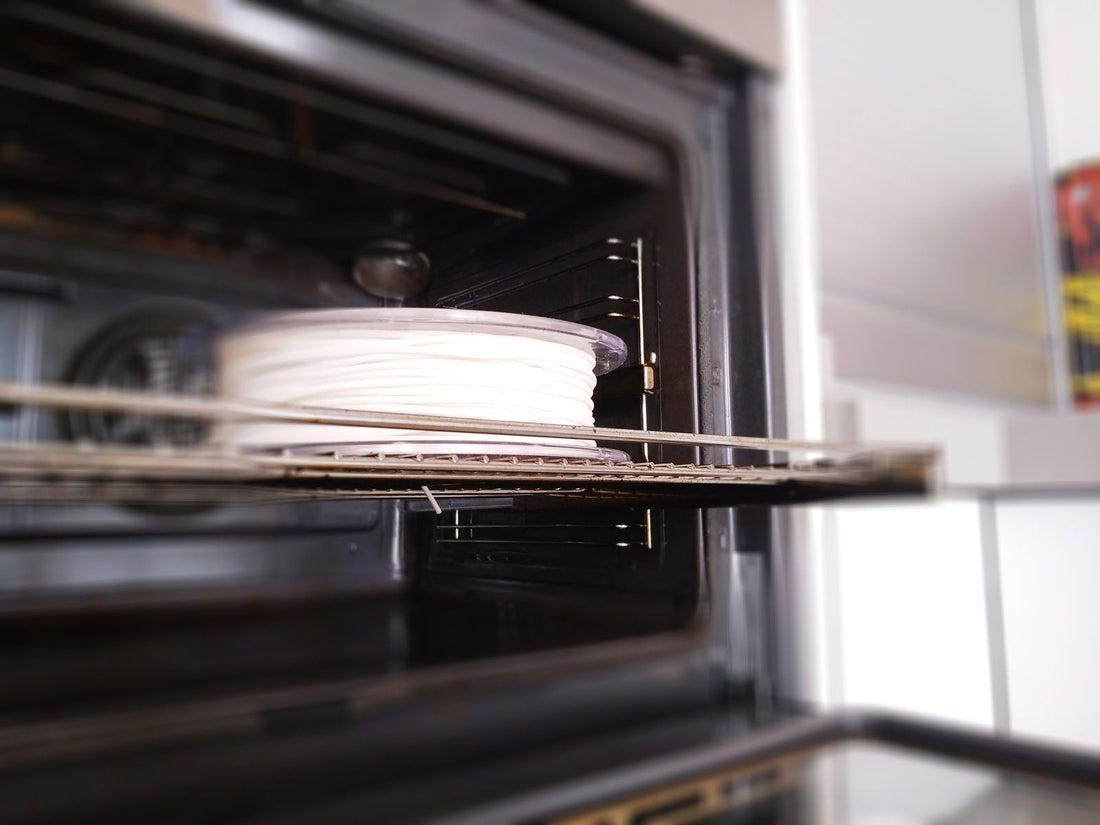Are Wet Filaments Ruining Your Prints?
It's a toxic relationship: moisture wants to get with your filaments, and your filaments want to absorb the moisture.
Tell Tale Signs of Wet Filament
- An abnormally fuzzy/bumpy/uneven surface texture with zits/stringing
- Heavily uneven extrusion lines
- In some cases severely reduced structural strength and integrity
- Blobbing and extreme cases can lead to a clogged nozzle
If you've ever started printing and heard crackling or popping noises, there is a very good chance that the filament has absorbed more moisture than it needs to print efficiently.
Luckily, this is very easy to fix and only takes drying time.
-
Fiberlogy Drying Instructions
|
Material Type |
Temperature (C) |
Durration (HRS) |
|
ABS |
80 |
2-4 |
|
ABS PLUS |
80 |
2-4 |
|
ABS ESD |
80 |
2-4 |
|
ASA |
80 |
2-4 |
|
BVOH* |
50 |
4 |
|
FIBERFLEX 30D* |
50 |
4-8 |
|
FIBERFLEX 40D* |
50 |
4-8 |
|
FIBERSILK |
50 |
2-4 |
|
FIBERWOOD |
50 |
2-4 |
|
HIPS |
No drying required |
|
|
NYLON PA12+CF15/5 |
60-90* |
8* |
|
NYLON PA12+GF15/5 |
60-90* |
8* |
|
NYLON PA12 |
60-90* |
8* |
|
PETG |
55 |
2-4 |
|
IMPACT PLA |
50 | 4 |
|
HD PLA |
50 | 4 |
|
PLA |
50 |
2-4 |
|
PLA MINERAL |
50 |
2-4 |
*We recommend you start at the lower end of the recommended drying temp for a low and slow dry time, especially for the nylon/nylon blends.
Tips:
- When you finish printing a material store it in a sealed bag with a desiccate packet to avoid over absorption of moisture. This will also save time down the road when you are ready to print the material again by not having to dry it for a long period of time before each use.
- Always run a small test print (e.g. temp tower) and listen for crackling sounds before attempting to run long/large prints, even with a newly opened filament.
- Drying time depends on how long the filament has been left out absorbing moisture, the humidity of your environment, and the type of material. Most nylons left out for a few days or weeks could need as much as 24+hours to fully dry, while a PLA could be left out for months and only need 1-2 hours to print like a newly opened spool.
- Be careful not to over-dry nylon. Nylon needs a tiny amount of moisture to print properly and not become over-brittle. This tiny amount of moisture also makes it easier to process.
- Treat Flexible filament the same way you would Nylon or a Nylon blend. When not in use, seal the Fiberflex or Filaflex in a tightly sealed bag with a desiccate packet. Before use be sure to dry the filament for a minimum of 4 hours and do an initial test print to ensure enough moisture has been pulled for maximum results.
Questions?
Shoot a message to narrowpath3d@gmail.com - it's our pleasure to answer your questions.

